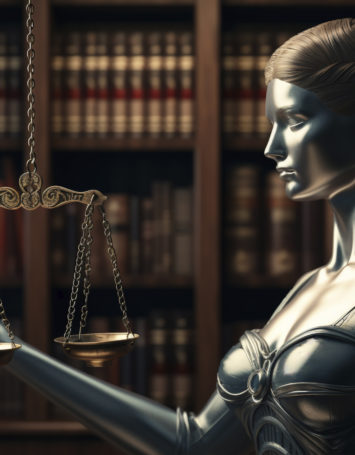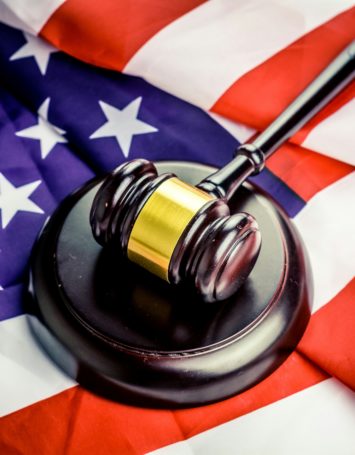Article written by Clyde Shuman
A U.S. district court judge has held that embedding a video in social media constitutes “display” under the Copyright Act. In Nicklen v. Sinclair Broad. Grp., Inc., Case No. 20-cv-10300 (JSR) (S.D.N.Y., July 30, 2021), the Court, denying a motion to dismiss, also finding that Sinclair’s “fair use” argument could not be resolved at this stage of the proceedings.
The plaintiff, Paul Nicklen, had captured footage of a starving polar bear and posted it to his Instagram and Facebook accounts. Numerous news outlets and online publishers, including defendants Sinclair Broadcast Group, Inc. and its affiliates, embedded the video in online articles without obtaining a license. Nicklen sued for copyright infringement. Sinclair moved to dismiss, arguing that embedding a video does not constitute “display” within the meaning of the Copyright Act and that the video’s inclusion in an article about its popularity was fair use.
By way of background, Nicklen, a Canadian nature photographer and filmmaker, authored and registered the copyright to a video of an emaciated polar bear wandering the Canadian Arctic. Nicklen posted the video on his social media accounts, including an express notation in the caption that the video “is exclusively managed by Caters News” and directed those seeking “[t]o license or use [the Video] in a commercial player” to contact Caters News.
Sinclair, a Maryland-based media conglomerate that owns over 200 local television stations and 118 wholly owned subsidiaries nationwide, published an article titled “Starving polar bear goes viral in heartbreaking video.” Sinclair included Nicklen’s video in the article using the Instagram or Facebook application programing interface (“API”) embed tool. Sinclair embedded Nicklen’s video in its article such that the video appeared within the body of the Sinclair article even when a reader took no action to retrieve the Video or to navigate to Nicklen’s social media accounts, and even when a reader did not have a Facebook or Instagram account.
Sinclair’s article states that “[a] photograph of a polar bear is grabbing attention as it shows the animal slowly succumbing to starvation.” The article repeats quotes Nicklen gave to National Geographic and also quotes the portion of Nicklen’s Instagram caption describing the polar bear population’s battle against extinction. The article also notes that “[t]he video has already reached over 1 million views on Facebook.” Nicklen alleges that the article was reposted — and the video was re- embedded — on all television station websites operated by Sinclair.
Although Nicklen provided licensing information in his Instagram post, Sinclar did not obtain a license or Nicklen’s consent before embedding the video in its article. Nicklen alleged that Sinclair and its affiliates infringed his copyright in the video and that Sinclair specifically was liable for inducing the copyright infringement by its affiliates. As noted, Sinclair moved to dismiss, arguing that embedding a video was not “display” under the Copyright Act and that its use here constituted fair use.
The court began its analysis by rejecting Sinclair’s first argument: “The fundamental question at issue here is whether embedding a video ‘displays’ the video within the meaning of the Copyright Act of 1976. This Court concludes that it does.” The court noted the broad meaning of “display” under 17 U.S.C. § 101, as well as the fact that “the exclusive display right set forth in the Copyright Act is technology-neutral, covering displays made directly or by means of any device or process ‘now known or later developed.’” Citing the legislative history of the Copyright Act, the court said, “The right is concerned not with how a work is shown, but that a work is shown.”
The court further found that Copyright Act’s text and history establish that embedding a video on a website “displays” that video within the meaning of the Act, “because to embed a video is to show the video or individual images of the video non-sequentially by means of a device or process.” Here, Nicklen alleged that Sinclair included in its web pages an HTML code that caused his video to “appear[]” within the web page “no differently than other content within the Post,” although “the actual Video . . . was stored on Instagram’s server.”
The Court rejected Sinclair’s argument that embedding is not display, and further declined to adopt the Ninth Circuit’s “server rule.” Under that rule, discussed in Perfect 10, Inc. v. Amazon.com, Inc., 508 F.3d 1146 (9th Cir. 2007), a website publisher displays an image by “using a computer to fill a computer screen with a copy of the photographic image fixed in the computer’s memory.” By contrast, when a website publisher embeds an image, the browser “interacts with the [third-party] computer that stores the infringing image.” Because the image remains on a third-party’s server and is not fixed in the memory of the infringer’s computer, under the “server rule,” embedding is not display.
The court here found that the Ninth Circuit’s “server rule” is contrary to the text and legislative history of the Copyright Act, noting expressly that the Act defines to display as “to show a copy of” a work, rather than “to make and then show a copy of the copyrighted work.” Per the court, the Ninth Circuit’s “server rule” makes the display right merely a subset of the reproduction right. Further per the court here, the server rule distinguishes between showing a copy possessed by the infringer and showing a copy possessed by someone else. However, “the Copyright Act makes no such distinction.”
The court also distinguished the Ninth Circuit’s reasoning in Perfect 10, noting that, unlike here, the defendant there operated a search engine and the copyrighted images were displayed only if a user clicked on a link. Per the court here, “When a user ‘open[s] up a favorite blog or website to find a full color image awaiting the user, whether he or she asked for it, looked for it, clicked on it, or not,’ the Ninth Circuit’s approach is inapt.” (citation, quotation omitted). As the court noted, Nicklen alleged that no user intervention was required to display the video’s individual images non-sequentially. An individual still image from the video awaited Sinclair readers whether they clicked the image to play the video or not.
The court also pointed to the limitations of the “server rule,” saying, “Under the server rule, a photographer who promotes his work on Instagram or a filmmaker who posts her short film on YouTube surrenders control over how, when, and by whom their work is subsequently shown — reducing the display right, effectively, to the limited right of first publication that the Copyright Act of 1976 rejects.” The court reasoned, “[I]t cannot be that the Copyright Act grants authors an exclusive right to display their work publicly only if that public is not online.”
With respect to Sinclair’s “fair use” defense, the court found that Sinclair operates for-profit news stations and websites that stood to profit from the web traffic Nicklen’s polar bear video attracted. As Sinclair had not licensed the video, its use was commercial. However, because Sinclair’s article stressed that Nicklen’s video had gone viral, relied on other reporting to describe the circumstances under which the video was made and added the number of views the video had received, the court held that such use was sufficiently transformative.
The court also found that Sinclair’s embedding of the entire video weighed against fair use, saying that Sinclair “could have conveyed the Video’s virality by providing a screenshot of the number of likes or views the Video received.” Finally, the court found that, although a news article about a viral video was unlikely to deprive the copyright owner of significant revenues, Sinclair’s use of the copyrighted video, if widespread, would harm the licensing market for Nicklen’s video. The court recognized that “[t]here would be no need for news outlets to license the video at all if each outlet could, without Nicklen’s prior authorization, embed the video from Instagram or Facebook. Unlike a parodic use, widespread adoption of [Sinclair’s] use could overtake the market for Nicklen’s video.”
The court concluded that Sinclair’s fair use affirmative defense “cannot be resolved at this stage,” noting that “granting a motion to dismiss on fair use grounds is rare.” (Citing cases)



